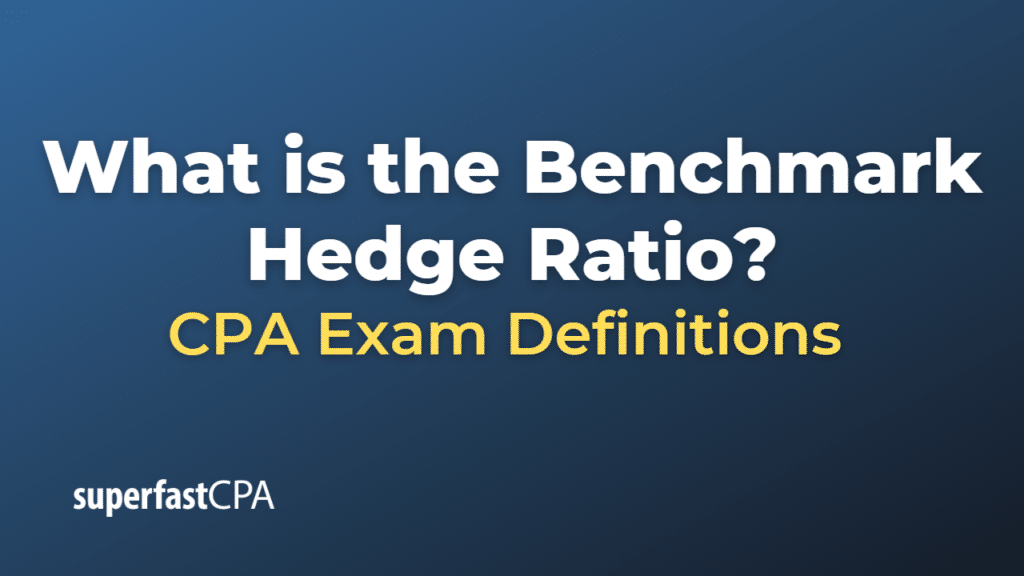Benchmark Hedge Ratio
The benchmark hedge ratio is a financial risk management concept used to determine the optimal proportion of an investment portfolio to hedge against market risks. It represents the proportion of a portfolio’s exposure to a particular risk factor, such as currency or interest rate fluctuations, that should be hedged using financial instruments like derivatives (e.g., futures, options, or swaps).
The benchmark hedge ratio is calculated by dividing the change in the portfolio’s value due to the risk factor by the change in the value of the hedging instrument due to the same risk factor. The purpose of calculating the hedge ratio is to identify the appropriate mix of hedging instruments that will minimize the impact of market risks on the portfolio’s value.
In other words, the benchmark hedge ratio aims to balance the trade-off between the cost of hedging and the potential benefits of risk reduction. A high hedge ratio indicates a higher level of risk reduction, while a low hedge ratio suggests a lower level of risk reduction.
It’s important to note that the optimal hedge ratio may change over time as market conditions and risk factors evolve, so investors and portfolio managers need to monitor and adjust their hedge ratios regularly to maintain effective risk management strategies.
Example of the Benchmark Hedge Ratio
Let’s consider a fictional U.S. based company, “ABC Corp,” that has significant business operations in Europe. ABC Corp has a $10 million investment portfolio, with 60% of its revenues denominated in euros. To hedge against the risk of currency fluctuations between the U.S. dollar (USD) and the euro (EUR), ABC Corp decides to use currency futures contracts.
In this example, we’ll focus on calculating the benchmark hedge ratio to protect the portfolio from currency risks.
- Determine the portfolio’s exposure to currency risk: ABC Corp’s portfolio has 60% exposure to the euro, so the exposure to currency risk is $6 million (60% of $10 million).
- Determine the value of the currency futures contract: Suppose one EUR/USD futures contract is equivalent to €100,000. If the current exchange rate is 1.10 (1 EUR = 1.10 USD), then the value of one futures contract is $110,000 (€100,000 * 1.10).
- Calculate the benchmark hedge ratio: Benchmark Hedge Ratio = (Portfolio Exposure to Currency Risk) / (Value of the Futures Contract) Benchmark Hedge Ratio = ($6,000,000) / ($110,000) Benchmark Hedge Ratio ≈ 54.55
In this example, the benchmark hedge ratio is approximately 54.55. This means that ABC Corp would need to purchase approximately 55 EUR/USD futures contracts to effectively hedge its currency risk exposure.
Keep in mind that this is a simplified example, and in practice, factors such as transaction costs, changes in exchange rates, and the duration of the hedge may influence the hedge ratio. Moreover, it’s important for investors and portfolio managers to monitor and adjust their hedge ratios regularly to maintain effective risk management strategies.













